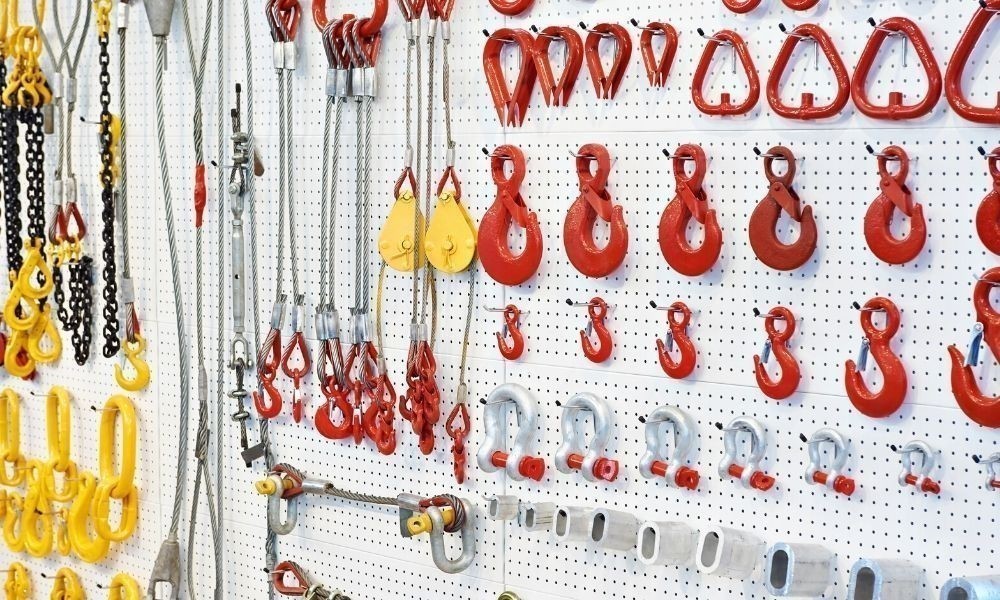Different Types of Rigging Equipment

The ability to transport materials and tools across a jobsite is imperative to workers being able to complete their tasks for the day. As such, the proper rigging gear must always be on hand—along with experienced professionals who know how to use them. However, these pieces of equipment can be more complex than they initially appear. Which rigging items are used is often dependent on the conditions of the job and work environment. Take a moment to learn the different types of rigging equipment and when they’re used on the job.
Rigging Hooks
Made to lift heavy objects while minimizing the chance of slipping, rigging hooks are the main component of any effective rigging system. Overall, these pieces of equipment come in three main types in order to best cater to specific jobs—hoist hooks, lifting or rigging hooks, and sling hooks. Each model of rigging hook has its own weight restrictions and measurement guidelines that must be considered when choosing the proper hook for a task.
Eye Bolts and Steel Nuts
Eye bolts and nuts—also known as adjustable hardware—are used to keep cables and wires secure. These items can vary in size and, as such, they need to be properly measured before each lift. The rigging professional needs to be sure to use the proper measurements to accommodate the load’s size, shape, and weight.
Blocks and Pulleys
Required for heavier loads, blocks and pulleys reduce the amount of force required to lift an object by supplying a designated amount of counterweight. However, it’s important to note that even these tools have their limits. Pulleys, for instance, work well on lighter loads that need only a little bit of weight balance. Blocks are more versatile and can handle weights of up to 30 tons, depending on the type you use.
Wire Ropes and Accessories
Created by weaving steel wires into a thick cord, wire ropes are designed to withstand a variety of conditions on the job site. Wire ropes are extremely durable and strong enough to accommodate a large weight range and therefore are suitable for cradling the object being moved. They also come with a variety of accessories, such as clips, thimbles, and sleeves, to make handling them easier for the worker.
Slings and Shackles
Working in tandem with wire ropes, slings are another method for supporting and lifting loads. However, while wire rope is malleable, slings often have the advantage because of their varying sizes, shapes, and materials.
